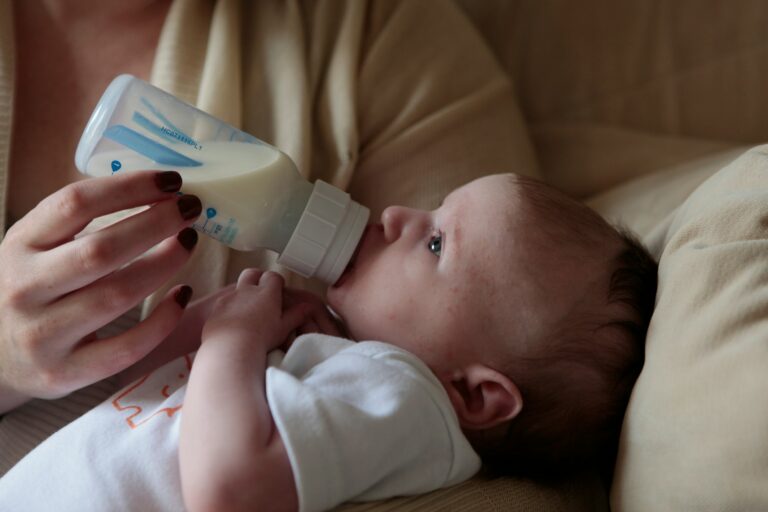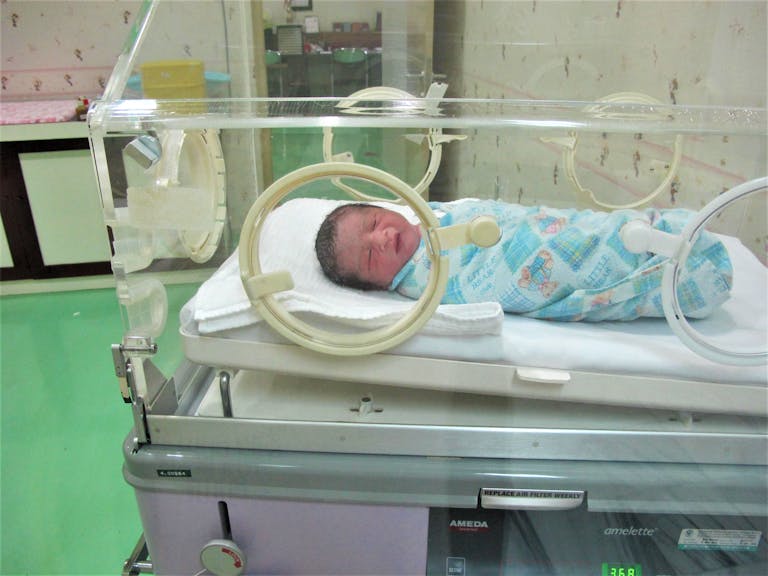The journey through baby sleep 4 to 12 months sweeps parents into an unpredictable dance—sometimes a lullaby, sometimes a wakeful march before dawn. You might watch the clock at midnight, counting intervals between night wakings, questioning if your little one’s fragmented rest signals a problem or merely a phase. Wondering whether four naps or two, resettling after a feed, or managing sudden sleep disruptions is “normal”? Scientific studies reveal that infant sleep isn’t just about quantity—milestones, nutrition, environment, and family rhythms all intertwine. Questions swirl and practical, evidence-based answers matter. This comprehensive resource helps decode the physiological rhythms, developmental leaps, and everyday challenges, offering medical clarity alongside actionable strategies for shaping healthy, adaptable sleep for everyone in your household.
Why understanding baby sleep 4 to 12 months transforms family life
Sleep in baby sleep 4 to 12 months acts as an invisible pillar for the entire family’s wellness. This period—marked by astonishing neurological growth—links sleep quantity and quality to brain plasticity, emotional regulation, memory consolidation, and immunological strength. Insufficient or poor-quality sleep at this stage can affect not just cognitive function and mood in babies but also parental stress, patience, and emotional resources. Pediatric sleep medicine consistently highlights the ripple effect: an overtired baby often becomes a fussy, hard-to-soothe child, while exhausted caregivers can feel short-tempered or overwhelmed. By decoding the age-specific sleep architecture, parents gain confidence to handle interruptions, adjust expectations, and foster a peaceful, stable environment where both baby and family can thrive.
Sleep evolution in babies from 4 to 12 months: schedules and biological rhythms
Mapping sleep architecture, night wakings, and nap transitions
Biologically, the sleep needs of infants do not remain static: they morph rapidly during baby sleep 4 to 12 months. Early in this journey, many babies sleep roughly 14 to 15 hours within 24 hours—3–4 intermittent naps coupled with night sleep. At around four months, the body’s sleep-wake cycles undergo dramatic reorganization, a phenomenon called the “4-month sleep regression.” Night wakings increase, naps fragment, and daytime sleep gradually consolidates from several brief rests to two longer naps by the end of the first year. Babies’ circadian rhythms—the internal clock governed by melatonin secretion and environmental cues—start harmonizing with the day-night cycle, guiding body temperature, hormone regulation, and digestion.
Key sleep schedule progression:
- 4-6 months: Expect 15 hours of total sleep (3–4 naps, night sleep spanning 10–12 hours). Daytime nap length is unpredictable, sometimes only 30–45 minutes.
- 7-8 months: About 14 hours daily; two to three naps as wake windows extend (2.5–3.5 hours).
- 9-12 months: Sleep totals lower to 13 hours, with 11–12 hours at night and 1–2 naps. Wake windows can stretch to 4 hours.
Each child’s needs may differ. Scientific literature underlines that mood and alertness, not simply sleep duration, reflect whether sleep routines suit your child.
Motor milestones and their nocturnal impact
What sends a once-settled sleeper into restless episodes? Motor milestones such as rolling, sitting, and crawling cause the ‘midnight gymnasium’ effect—babies practice new skills in their crib, temporarily disturbing established patterns. As the brain reorganizes connections, frequent, sometimes perplexing, awakenings become common. Support daytime practice; anxieties and disrupted sleep usually resolve once mastery is achieved.
Separation anxiety, emotional regulation, and bedtime
Separation anxiety typically intensifies between 8 and 12 months, driven by maturing cognitive functions like object permanence. This emotional leap triggers new sleep challenges: resistance at bedtime, or repeated calls for comfort at night. Soothing routines, comforting games (like peekaboo), and consistent responses at night (gentle touch, soft words in the dark) calm the nervous system, helping children feel safe to return to sleep.
Environmental changes: daycare, caregivers, and routine shift
Introducing new caregivers or daycare outside the familiar home creates shifts in baby’s attachment network, potentially echoing through sleep quality. Increased night wakings or shortened naps reflect underlying adaptation stress. Seek strong communication with caregivers about nap habits, comfort items, and routines, knowing that most babies adjust with time and reassurance.
Nutrition’s role: Introducing solids and feeding patterns
Introducing solid foods between 4 and 6 months can spark mild digestive adjustments—gas, changed stool patterns, transient discomfort—which in turn may disrupt nighttime sleep. Ensure that infants receive adequate calories during the day as this supports natural reduction in overnight feeds, aligning with the maturation of circadian metabolic rhythms.
Schedules and practical support: optimizing baby sleep 4 to 12 months
From unpredictability to patterns: sleep in 4–6 months
- Sleep needs: 14–15 hours total (night + 3–4 naps).
- Wake windows: 1.5–2.5 hours.
- Normal: Short (30–45 min) naps; frequent night feeds; first steps toward falling asleep independently.
The 4-month sleep regression explained
As the brain builds more mature sleep cycles (averaging 40–60 minutes), arousals increase—sometimes every 1–2 hours. Signs: heightened fussiness, shortened naps, and erratic sleep-onset. Solutions:
- Maintain pre-sleep rituals—song, bath, dim lighting.
- Encourage self-soothing: lay baby down drowsy but awake, respond gently but delay immediate intervention.
- Discontinue swaddling as rolling emerges; switch to sleep sacks for safety.
From 6 to 9 months: consolidation and gentle training
- Sleep needs: 14 hours (night + 2–3 naps).
- Wake windows: 2.5–3.5 hours.
- Dropping the third nap is common; sleep begins to stretch in nighttime blocks, sometimes 5–8 hours straight.
- Some families consider gentle sleep training—gradual withdrawal, ‘check and console,’ or nurturing consistent routines—always respecting baby temperament and parent comfort.
- Responsive night feeds remain developmentally appropriate; many babies naturally start night-weaning, though not all.
Developmental leaps affect sleep
Bursts in motor, cognitive, or social activity (crawling, babbling, increased clinging) may kick off new regressions. Reinforce bedtime routines, allow for extra reassurance, and anticipate temporary changes in sleep length and quality.
9–12 months: transitions, regression, and flexibility
- Sleep needs: 13–14 hours (night + 1–2 naps)
- Wake windows: 3–4 hours.
- Beware the “12-month sleep regression”: increased mobility (standing, first steps), language surges, and intensified separation anxiety can fragment previously solid sleep stretches.
- Resist transitioning to a single nap too early—most babies tolerate this shift only closer to 14–18 months. If naps shorten, shift bedtime earlier instead.
Understanding the physiology: cycles, hormones, and the importance of deep sleep
During baby sleep 4 to 12 months, sleep cycles consist of deep (non-REM) and light (REM) sleep phases, lasting 40–60 minutes. Early in the night, non-REM phases dominate—vital for release of growth hormone, cellular repair, and immune strengthening. This underpins why specialists suggest earlier bedtimes, maximizing restorative deep cycles.
As babies begin to link sleep cycles—falling back asleep after brief wakings independently—the likelihood of sustained rest increases. If a baby depends on sleep associations (rocking, nursing, pacifier), gradual steps toward less dependency—gentle reduction of support, introducing transitional objects—enables natural self-soothing.
Safe sleep guidelines: promoting security and reducing risk
- ABCs of safe sleep: Place baby alone, on their back, in a crib for all sleep episodes. Once rolling both ways, allow the discovered position.
- Room sharing: Encourage for the first 6–12 months to reduce SIDS risk; bed-sharing remains medically discouraged.
- Swaddling: Cease by 4 months or at first sign of rolling; prefer breathable sleep sacks.
- Environment: No pillows, blankets, bumpers or soft toys; regulate room temperature; never use weighted products.
- Accessories: Use white noise (low, distant from crib); blackout curtains help align circadian signals; pacifiers (introduced after breastfeeding is established) may reduce SIDS, but avoid attachments.
Routines, associations, and troubleshooting regressions
Establishing a calm bedtime routine—same order each night, minimal stimulation, gentle cues—signals the brain to prepare for sleep. Place baby down while drowsy but awake. When night wakings occur, pause briefly before intervening; use soft shushing or a gentle touch to foster self-soothing. Recognize regressions as periods of neurological growth—patience and consistency support smoother adaptation.
Naps, early morning wakings, and addressing short sleep cycles
- Base nap timing on age-appropriate wake windows; overtiredness impairs both night and day sleep.
- Use dark, quiet environments and repeat pre-nap rituals.
- Early rising? Re-examine nap balance and bedtime; too-late bedtimes or excessively long wake windows early in the day often backfire.
Nutrition, feeding routines, and sleep quality
- Night feeds may continue into later infancy; as daytime solids and feeds increase, most babies self-wean overnight.
- If ready to reduce feeds, go slowly—a gradual transition ensures adequate intake and minimizes nighttime disruptions.
- Both breastmilk and formula provide critical nutrition; pacifiers support self-soothing but should not replace feeds if baby displays genuine hunger cues.
Approaches to sleep training: balancing independence and attachment
Gentle methods—such as checking in at intervals without picking up, or gradual withdrawal—emphasize responsive, minimal-distress encouragement of independent settling. Structured methods, like timed checks, may shorten the adaptation period but suit only some families’ styles. Respect your own and your baby’s temperament; a stable, affectionate evening ritual always lays the foundation for success. Sleep changes are not a withdrawal of love, but a teaching process, building lifelong regulation skills.
Developmental challenges: teething, growth spurts, and emotional leaps
Short-term disruptions due to teething or developmental leaps are almost inevitable during baby sleep 4 to 12 months. Increase in night wakings, augmented feeding, or clinginess are signals that the body or mind is busy adapting. Maintain routines and provide comfort; these phases typically resolve without intervention.
Support tools and practical resources
- Transitioning from swaddle to wearable blankets ensures safe, comfortable sleep.
- White noise and blackout curtains provide environmental stability.
- Choose sleepwear that maintains warmth without risk; never rely on weighted products or unsafe accessories.
- Building a village: Lean on friends, health professionals, and reliable resources for guidance—honest conversations foster resilience and informed expectations.
Caring for parents: sleep, support, and mental health
Sleep deprivation wears on even the most resilient caregivers. Accept help—brief rests, shared duties, or support groups lift some of the burden and reinforce community. If persistent sleep problems drain your well-being or feed ongoing anxiety, consult medical professionals to rule out health issues in either parent or baby. A sleep diary can clarify patterns and aid productive, evidence-based discussions.
When to seek further evaluation
Red flags prompting care: ongoing night wakings (more than 3–4 times/night after 6 months), refusal to feed, sustained lethargy, or excessive irritability. Trust your instincts—early intervention is not overreaction; it is proactive stewardship of your family’s collective health.
Key Takeaways
- Baby sleep 4 to 12 months is defined by rapid changes—both in sleep architecture and practical routines—for the entire family.
- Consistent bedtime and nap rituals support security and biological sleep rhythms.
- Responsive care, including breastfeeding or bottle-feeding, and safe sleep environments build strong foundations for healthy development.
- Regressions, teething, and milestones are temporary—patience, knowledge, and adaptability minimize disruption.
- Rely on your network, embrace professional guidance as needed, and remember family wellness matters, too.
- Curious about optimizing your baby’s sleep or facing new challenges late at night? Download the Heloa app for tailored health advice and free child health questionnaires. Your journey is unique, but expert support is at your fingertips.
Questions Parents Ask
How long should a 4 to 12 month old baby sleep in total, and how many naps are normal?
Between 4 and 12 months, it’s common for babies to sleep about 12 to 16 hours within each 24-hour period, including both nighttime sleep and naps. Most little ones at this age will take 2 to 3 naps during the day, and nighttime sleep gradually lengthens—sometimes up to 9–12 hours, though brief awakenings are possible. Each baby is unique, and fluctuations in sleep timing or nap duration are usually part of healthy development. If you notice big changes or are concerned, you can always connect with a healthcare professional for reassurance.
Is it normal for my 4 to 12 month old to still wake during the night?
Absolutely, many babies between 4 and 12 months will still experience night wakings. These awakenings can be due to various factors, like hunger, teething, changes in routine, or developmental milestones. Some infants naturally begin to sleep longer stretches at night within this window, while others may need extra support or comfort. Remember, waking at night doesn’t mean your baby isn’t progressing well—it’s part of their normal development. If you feel overwhelmed by frequent disturbances, reach out to your support system or a health professional; there are gentle strategies available for both baby and parents.









